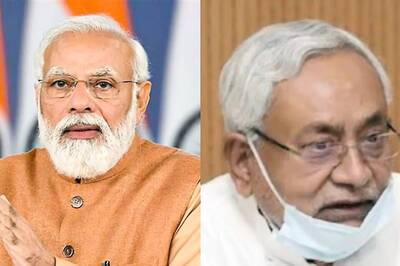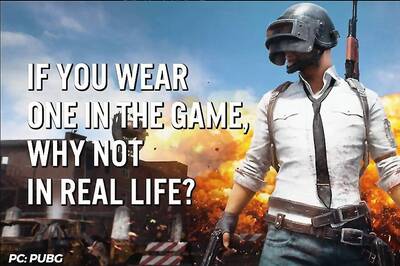
views
What does Precision Attack do?
Precision Attack increases an Attack Roll’s chance to hit an opponent. Precision Attack is a Passive Feature, used by Battle Masters (a Fighter subclass), that allows you to spend a Superiority Die (1d8) and add it to the result of your Attack Roll. This increases your chance of hitting an enemy (but not the damage they take). Cost: 1 Superiority Die Range: Self Duration: Until Long Rest How to learn: Reach class level 3 as a Battle Master Fighter, or choose the Martial Adept feat
Benefits of Precision Attack in BG3
Precision Attack can reduce Attack Roll penalties from other feats. One of the biggest benefits of Precision Attack is that it can reduce the Attack Roll costs caused by other feats like Sharpshooter or Great Weapon Master. These feats dole out serious damage but have a lower chance of hitting an enemy—casting Precision Attack can help increase your chances to hit. Sharpshooter can give ranged weapons you’re proficient with a -5 penalty to their Attack Roll, but deal an extra 10 damage if you do hit. Similarly, Great Weapon Master can give heavy melee weapons you’re proficient with an additional 10 damage, but there’s also a -5 Attack Roll penalty. Casting Precision Attack before using a ranged weapon with the Sharpshooter or Great Weapon Master feats toggled adds the 1d8 to that -5 penalty, possibly canceling it out entirely. You can also combine Precision Attack with other Battle Master attacks and spell scrolls.
Precision Attack is useful against high armor class enemies. Since the ability increases your chances of hitting a target, it can be incredibly helpful when fighting an enemy with a high armor class (AC), which requires you to roll a higher Attack Roll in order to hit it. Precision Attack can be great in late-game combat when enemies typically have a higher AC.
You can use Precision Attack without spending an Action. In BG3, you get a limited number of Action and Bonus Action points (represented by the green circle and orange triangle above your hotbar). Precision Attack doesn’t cost an Action or Bonus Action, which means you can use it at any point during your turn without sacrificing the option to use something different. You get 1 Action and 1 Bonus Action per turn by default. Some abilities may grant you more, but using this feat without costing an Action can be super helpful because you don’t have many. However, this is a 1-time feature that only refreshes after you take a Long Rest, so it may be best to save it for a battle you know is going to be particularly difficult.
Drawbacks of Precision Attack in BG3
You have to cast Precision Attack before you make an Attack. In D&D 5e, which Baldur’s Gate 3 is based on, you can use Precision Attack after an Attack Roll. This allows you to take a roll that you know is going to be a miss and turn it into a hit. In Baldur’s Gate 3, however, Precision Attack can only be used before you roll, which eliminates this advantage. No one is sure why Larian Studios, the team behind BG3, didn’t include this advantage in the game. Some have speculated that 5e’s rules may have made Precision Attack too overpowered.
Precision Attack vs. Feinting Attack
Feinting Attack uses an Action and Bonus Action; Precision doesn’t. While Precision Attack doesn’t use an Action at all, Feinting Attack uses both your Action and Bonus Action. This makes Feinting Attack pretty costly if you only have 1 of each Action type. This is one of the main reasons why Feinting Attack is considered to be one of the least useful Battle Master Maneuvers.
Feinting Attack specifically targets an enemy who has Advantage. Feinting Attack targets an enemy who has Advantage, which is granted depending on temporary or situational circumstances. However, Precision Attack can be used on any target, whether they have Advantage or not. An enemy might have Advantage if they attack you while you’re blinded or afflicted with Faerie Fire. They can also have Advantage if they make attacks while they’re hiding.
Feinting Attack deals 1d8 damage to a target; Precision doesn’t deal any. While Precision Attack uses one of your Superiority Dice, Feinting Attack doesn’t use any. Instead, it deals 1d8 of damage using your Action and Bonus Action. Precision Attack doesn’t deal any damage at all—instead, it adds the Superiority Die roll to your chances to hit a target. Although the extra damage might help you in battle, the Action cost might not make the Feinting Attack maneuver worth it.
How do superiority dice work?
You get 4 Superiority Dice that are each equal to 1d8. Superiority Dice are available with the Battle Master subclass, which you can get once you reach level 3 with a Fighter class character. These can be spent on maneuvers (like Precision Attack) and are refreshed after a Short or Long rest. At class level 7, you get up to 5 Superiority Dice to spend. At level 10 you can get the Improved Combat Superiority passive feature, which increases the size of your Superiority Die to 1d10.
Best Battle Master Maneuvers in BG3
Pushing Attack Pushing Attack allows you to spend a Superiority Die to make an attack that deals 1d8 of damage and has a chance of pushing the target back 15 ft (4.6 m). This can be a fantastic attack because it can outright kill enemies when you use it to push them off ledges or prevent them from using Opportunity Attacks. The downside is that it can require repositioning your character to push enemies into the right spot to kill them.
Riposte When a target misses you with a melee attack, this Reaction allows you to spend a Superiority Die to use a powerful strike that deals 1d8 damage plus your base weapon damage. Unlike most other maneuvers, it doesn’t cost an Action, and it can be a game-changing amount of damage when you’re in a melee battle with an enemy. Remember to toggle this feature on as a Reaction on your turn to use it during an enemy’s attack.
Trip Attack This attack lets you spend a Superiority Die and an Action to make an attack that deals 1d8 of damage (in addition to your base weapon damage) and has the chance to knock a target Prone if they’re Large or smaller. Knocking an enemy Prone can be extremely useful because it allows your party to pile on attacks and skip the enemy’s upcoming turn. When a target is Prone, it means they can’t move or take Actions, Bonus Actions, or Reactions. Attacks made against a Prone target have Advantage if they’re made within 10 ft (3.0 m). The one downside is that this maneuver can’t be used on Huge (or Gargantuan) enemies, like Giants or Dragons.
Menacing Attack Like Trip Attack, Menacing Attack spends a Superiority Die and an Action to make an attack that deals 1d8 damage plus your normal weapon damage. However, instead of having the chance to knock an enemy Prone, Menacing Attack can possibly Frighten the target, which can be a powerful move in battle. Frightened enemies can’t move and any Attack Rolls or ability checks they make have Disadvantage against you and your party members.
Rally Rally is a Bonus Action that allows you to grant 8 Hit Points (HP) to a target within 18 m (59 ft). This maneuver might be more useful for lower-level Battle Master Fighters since the amount of HP doesn’t change and your party members’ HP will increase as they level. To get the most use out of Rally, choose it within the first batch of Battle Maneuvers at level 3. At level 5 and higher, it usually becomes less useful. Rally might be most useful to revive Downed party members in early-game battles.



















Comments
0 comment